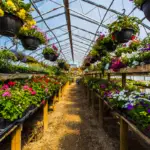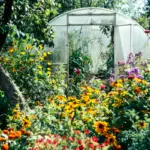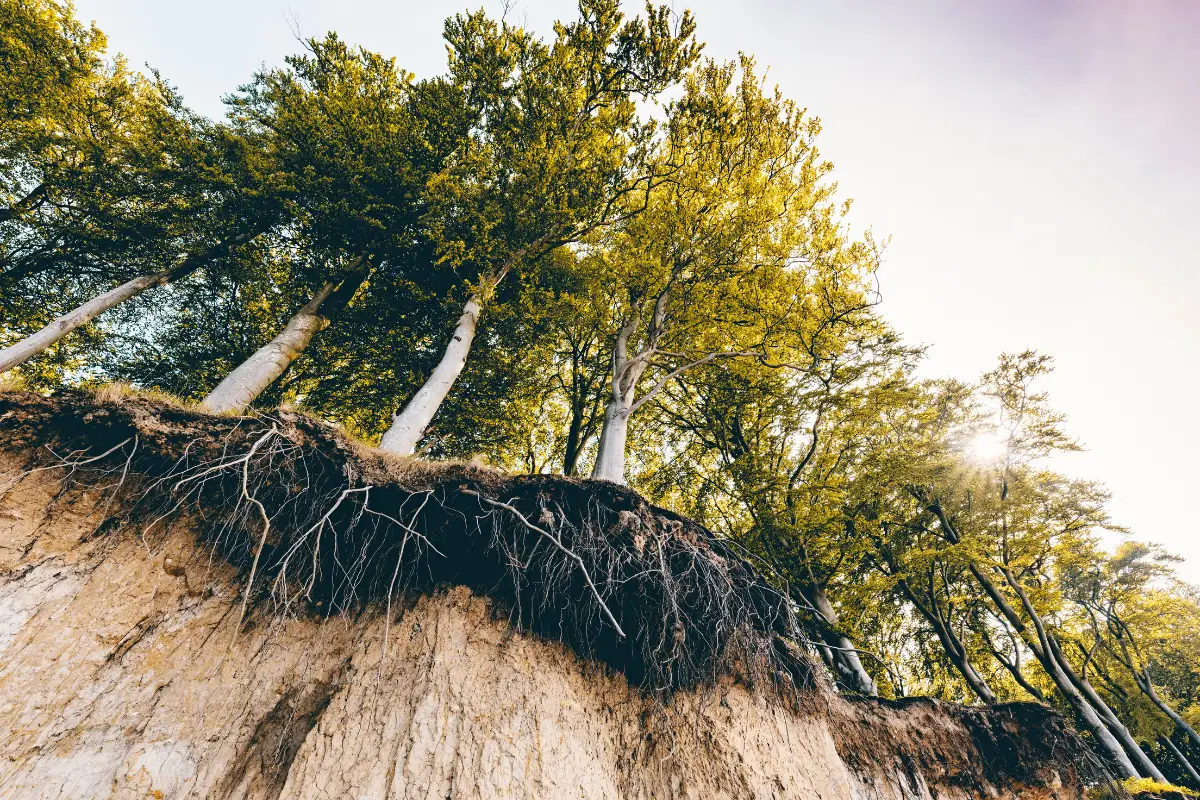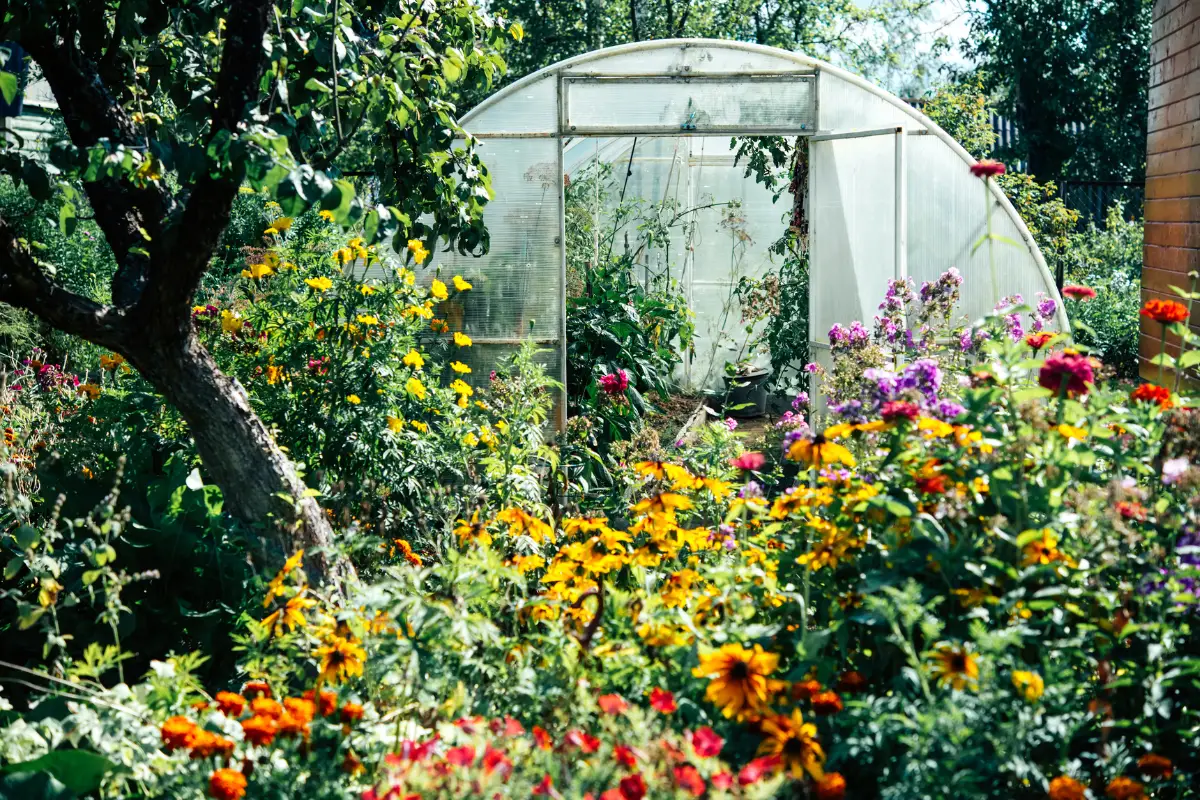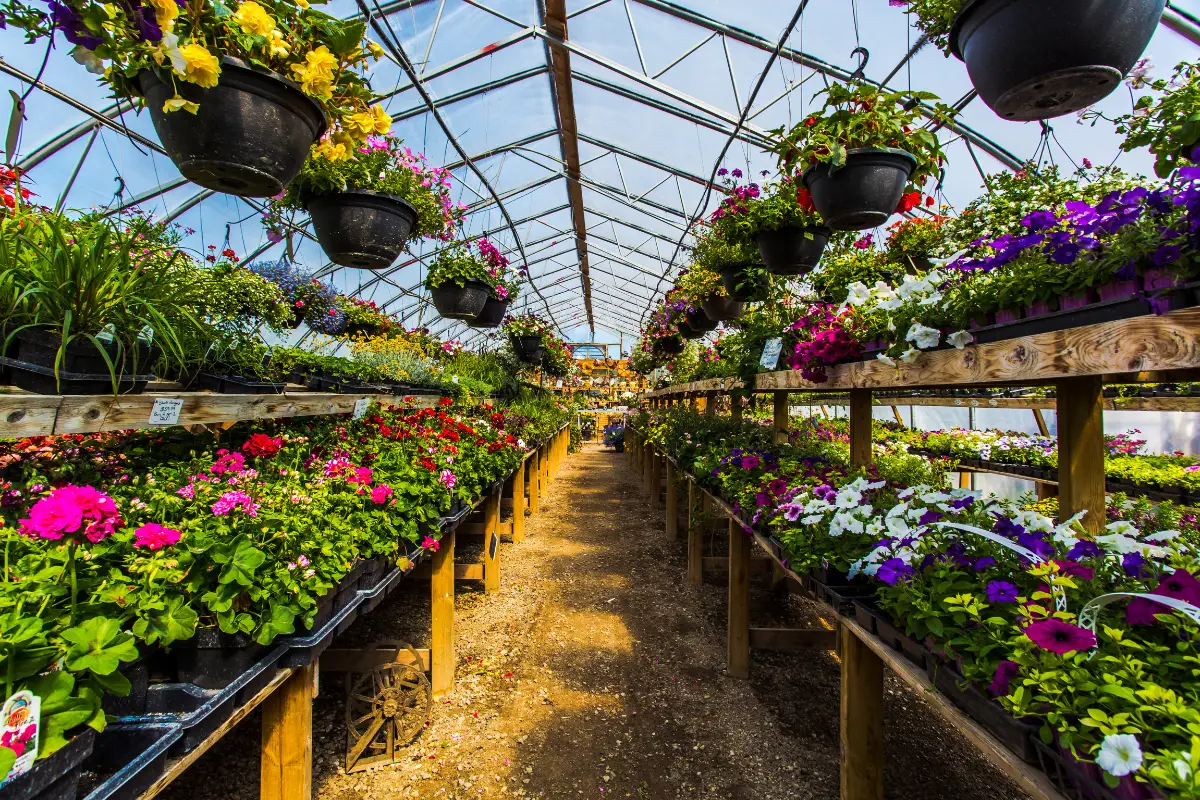Greenhouses are a great way to extend the growing season and cultivate plants that may not otherwise thrive in certain climates. However, not all plants are suitable for greenhouse growing.
In fact, there are some plants that should not be grown in a greenhouse at all. Knowing what not to grow in a greenhouse is just as important as knowing what to grow.
One plant that should not be grown in a greenhouse is hardy spring bulbs such as hyacinth, narcissus (daffodil), and tulip.
While these bulbs can be brought into a greenhouse for display, they need to be started outdoors first.
After planting, bulbs require a period of complete darkness and a temperature of around 40°F (4°C). Therefore, starting them in a greenhouse is not ideal.
Another plant to avoid growing in a greenhouse is invasive species. Invasive plants can quickly take over a greenhouse and damage other plants.
Some common invasive species include English ivy, Japanese honeysuckle, and kudzu.
It is important to research any plant before growing it in a greenhouse to ensure it will not become invasive.
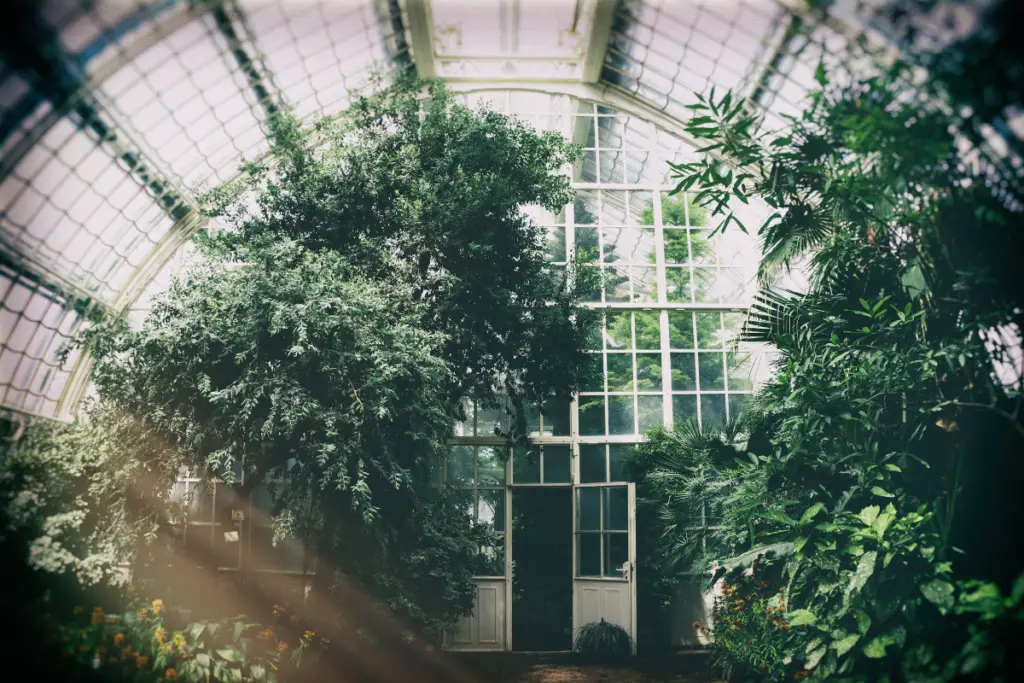
Table of Contents
Understanding Greenhouse Environment
Greenhouses are a great way to extend the growing season, but it’s important to understand the environment inside them.
Greenhouses can be a controlled environment, but they can also have their own set of challenges.
Temperature
One of the most important factors to consider when growing plants in a greenhouse is temperature. Greenhouses can get very hot during the day, especially in the summer months.
It’s important to have a way to regulate the temperature, such as ventilation or shading.
On the other hand, greenhouses can also get very cold at night, so it’s important to have a way to heat the greenhouse.
Humidity
Humidity is another important factor to consider when growing plants in a greenhouse.
High humidity can lead to mold and mildew growth, while low humidity can cause plants to dry out.
It’s important to monitor the humidity levels and adjust them as needed. One way to increase humidity is by using a humidifier, while a dehumidifier can be used to decrease humidity levels.
Light
Light is essential for plant growth, but too much or too little can be harmful.
Greenhouses can provide plenty of light, but it’s important to make sure the light is evenly distributed throughout the greenhouse.
Supplemental lighting can be used to provide additional light if needed.
Water
Watering can be tricky in a greenhouse. It’s important to make sure plants are getting enough water, but not too much.
Overwatering can lead to root rot, while underwatering can cause plants to wilt. It’s important to monitor the soil moisture levels and adjust watering accordingly.
Pest Control
Greenhouses can be a haven for pests, such as aphids, whiteflies, and spider mites.
It’s important to have a pest control plan in place, such as using natural predators or applying insecticidal soap.
Regularly inspecting plants for signs of pests can help prevent infestations.
What Not to Grow
While greenhouses can be a great place to grow a variety of plants, there are some plants that are better suited for outdoor growing. For example, some vegetables, such as corn and pumpkins, require a lot of space and may not be practical to grow in a greenhouse.
Additionally, some plants, such as citrus trees, require a lot of light and may not thrive in a greenhouse environment.
It’s important to research the specific needs of each plant before deciding what to grow in a greenhouse.
Plants Not Suitable for Greenhouse Cultivation
When it comes to greenhouse cultivation, there are certain plants that are not suitable for the environment.
In this section, we will discuss the plants that should not be grown in a greenhouse.
Fruit Trees
Fruit trees are not suitable for greenhouse cultivation. They require a lot of space to grow and develop properly, which is not possible in a greenhouse.
Moreover, fruit trees require a lot of sunlight and fresh air, which is difficult to provide in a greenhouse.
Additionally, fruit trees are prone to pest and disease problems, which can quickly spread in a closed environment like a greenhouse.
Deep Rooted Vegetables
Deep-rooted vegetables like carrots, parsnips, and potatoes are not suitable for greenhouse cultivation.
They require a lot of space to grow and develop, which is not possible in a greenhouse. Moreover, deep-rooted vegetables require a lot of nutrients and water, which can quickly deplete the soil in a greenhouse.
Additionally, these vegetables are prone to pest and disease problems, which can quickly spread in a closed environment like a greenhouse.
Cold Hardy Plants
Cold-hardy plants like broccoli, cauliflower, and cabbage are not suitable for greenhouse cultivation.
They are hardy plants that can withstand cold temperatures and frost, which is not possible in a greenhouse.
Moreover, cold-hardy plants require a lot of space to grow and develop properly, which is not possible in a greenhouse.
Additionally, these plants require a lot of sunlight and fresh air, which is difficult to provide in a greenhouse.
Factors Affecting Plant Growth in Greenhouses
Growing plants in a greenhouse can provide many benefits, such as increased control over the growing environment, protection from pests and harsh weather conditions, and the ability to extend the growing season.
However, to achieve optimal plant growth and yield, it is important to understand and manage the various factors that can affect plant growth in a greenhouse.
Light Requirements
Light is one of the most important factors affecting plant growth. Plants require light for photosynthesis, which is the process by which they produce energy and grow.
In a greenhouse, it is important to ensure that plants receive the right amount and quality of light.
Factors that can affect the amount and quality of light in a greenhouse include:
- Orientation and location of the greenhouse
- Time of year and day
- Cloud cover and weather conditions
- Shade from nearby structures or trees
- Type and placement of artificial lighting
To optimize plant growth, it is important to monitor and adjust the amount and quality of light in the greenhouse as needed.
Temperature Control
Temperature is another important factor affecting plant growth. Most plants have a preferred temperature range for growth, and deviations from this range can affect growth and yield.
In a greenhouse, it is important to maintain a consistent temperature range that is appropriate for the plants being grown.
Factors that can affect temperature in a greenhouse include:
- Orientation and location of the greenhouse
- Insulation and ventilation
- Heating and cooling systems
- Time of year and day
- Weather conditions
To optimize plant growth, it is important to monitor and adjust the temperature in the greenhouse as needed.
Humidity Levels
Humidity is also an important factor affecting plant growth. Plants require a certain level of humidity to grow and thrive, and deviations from this level can affect growth and yield.
In a greenhouse, it is important to maintain a consistent humidity level that is appropriate for the plants being grown.
Factors that can affect humidity in a greenhouse include:
- Watering and irrigation practices
- Ventilation and air circulation
- Temperature and weather conditions
- Type of plants being grown
To optimize plant growth, it is important to monitor and adjust the humidity level in the greenhouse as needed.
Common Mistakes in Greenhouse Gardening
Greenhouse gardening can be a rewarding experience, but it requires careful planning and attention to detail.
Here are some common mistakes to avoid when growing plants in a greenhouse.
Overcrowding Plants
One of the most common mistakes greenhouse gardeners make is overcrowding their plants.
While it may be tempting to pack as many plants as possible into a limited space, this can actually harm your plants.
Overcrowding can lead to poor air circulation, which can cause fungal diseases to spread. It can also lead to competition for resources like water and nutrients, which can stunt growth.
To avoid overcrowding, make sure to give each plant enough space to grow. This will vary depending on the type of plant, so do your research before planting.
You may also want to consider using shelving or hanging baskets to maximize space.
Ignoring Pest Control
Another common mistake in greenhouse gardening is ignoring pest control. Greenhouses can be a haven for pests like aphids, spider mites, and whiteflies.
If left unchecked, these pests can quickly multiply and damage your plants.
To prevent pest infestations, make sure to regularly inspect your plants for signs of damage or infestation.
You may also want to consider using natural pest control methods like companion planting, sticky traps, or introducing beneficial insects like ladybugs.
Inadequate Ventilation
Proper ventilation is essential for a healthy greenhouse environment. Without adequate ventilation, the temperature and humidity levels can quickly rise, leading to mold, mildew, and other problems.
To ensure proper ventilation, make sure to install vents or fans in your greenhouse. You may also want to consider using shade cloth to reduce the amount of direct sunlight and heat entering your greenhouse.
By avoiding these common mistakes, you can create a healthy and thriving greenhouse environment for your plants.
Conclusion
In conclusion, there are several plants that are not recommended to be grown in a greenhouse due to various factors.
Some plants require more space than what a greenhouse can provide, while others may not thrive in the environment created in a greenhouse structure.
It is important for greenhouse growers to carefully consider what they want to grow and research the specific needs of each plant before making any decisions.
While a greenhouse can provide a controlled environment for optimal plant growth, it is not a one-size-fits-all solution for all types of plants.
Growers should also be aware of the potential drawbacks of greenhouse gardening, such as the cost of setting up and maintaining a greenhouse, the need for regular maintenance and monitoring, and the risk of pest and disease infestations.
By carefully selecting the right plants and monitoring their growth, greenhouse growers can enjoy a successful and rewarding gardening experience.
With the ability to control the growing environment, protect plants from pests and diseases, and produce crops all year round, greenhouse gardening can be a great way to enjoy fresh produce and beautiful plants in any season.
- How to Dry Basil Leaves: A Professional Guide
- Is an Avocado a Fruit or Vegetable? Simple Answer and Explanation
- Does Pineapple Have Seeds? Exploring the Anatomy of Pineapples
- Blooming Through Winter: Can I Grow Vegetables Indoors in the Winter?
- What Can You Grow in a Greenhouse All Year Round: A Guide to Year-Round Greenhouse Gardening
- Are Blueberries Blue? Debunking the Myth of Their Color












